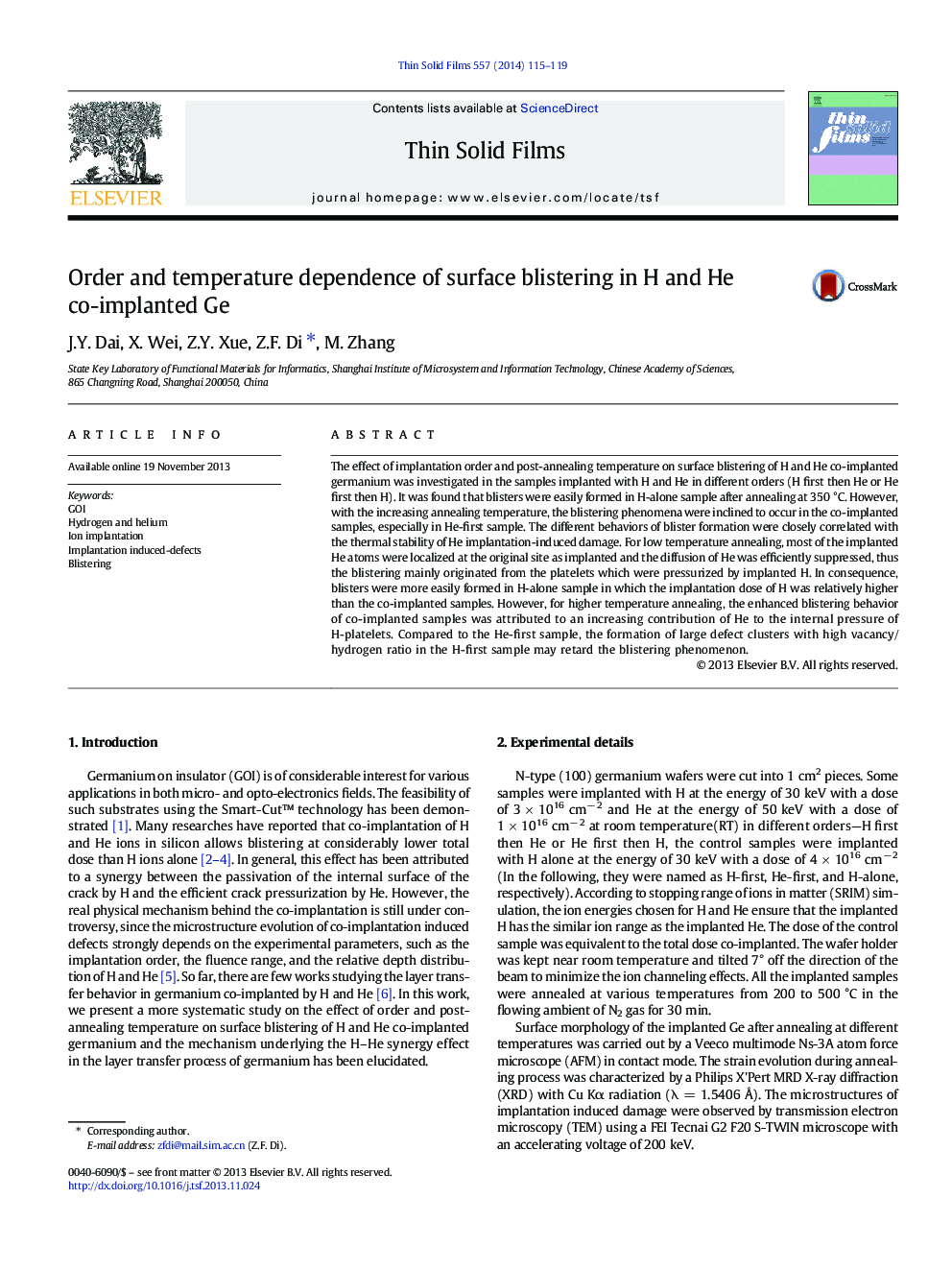| Article ID | Journal | Published Year | Pages | File Type |
|---|---|---|---|---|
| 8035130 | Thin Solid Films | 2014 | 5 Pages |
Abstract
The effect of implantation order and post-annealing temperature on surface blistering of H and He co-implanted germanium was investigated in the samples implanted with H and He in different orders (H first then He or He first then H). It was found that blisters were easily formed in H-alone sample after annealing at 350 °C. However, with the increasing annealing temperature, the blistering phenomena were inclined to occur in the co-implanted samples, especially in He-first sample. The different behaviors of blister formation were closely correlated with the thermal stability of He implantation-induced damage. For low temperature annealing, most of the implanted He atoms were localized at the original site as implanted and the diffusion of He was efficiently suppressed, thus the blistering mainly originated from the platelets which were pressurized by implanted H. In consequence, blisters were more easily formed in H-alone sample in which the implantation dose of H was relatively higher than the co-implanted samples. However, for higher temperature annealing, the enhanced blistering behavior of co-implanted samples was attributed to an increasing contribution of He to the internal pressure of H-platelets. Compared to the He-first sample, the formation of large defect clusters with high vacancy/hydrogen ratio in the H-first sample may retard the blistering phenomenon.
Keywords
Related Topics
Physical Sciences and Engineering
Materials Science
Nanotechnology
Authors
J.Y. Dai, X. Wei, Z.Y. Xue, Z.F. Di, M. Zhang,
